A guide to public transport in Milan
Milan has an extensive network of public transportation, which makes public transport a pretty efficient way to travel through the city. The different public transportation methods in Milan consist of buses, trains, trams, trolleybuses and metros. Each of them have their own advantages and disadvantages and not all of them have a stop in each neighborhood. When someone has arrived in this city for the first time it can take a while before they have figured out how the public transport works. But read on as we already have done the job for you and summarized the most important aspects of the public transport in Milan.
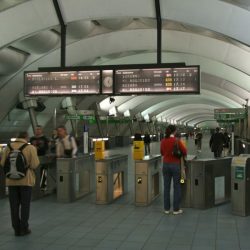
The public transport tickets and prepaid payment card
Making use of public transport is a convenient way to travel through Milan, but it is always a hassle to find out which tickets are available and which one is best for you. So we from Meet the Cities will provide you with the necessary information to make the right decision. There are several types of tickets and a rechargeable electronic card available. The choice becomes easier when you know how many trips you want to make and if you know whether you want to stay within the inner city.
The paper tickets and rechargeable electronic card can best be bought from the automatic machines located in metro stations or the ATM (Azienda Trasporti Milanesi) points, but are also available at authorised resellers like some newsstands, bars and tobacconists. Trying to buy a ticket from the driver is a mistake often made by tourists.
It is important that you validate your public transport ticket every time when you change a vehicle. And don’t throw your ticket away while travelling because you will need it when you want to enter or leave the metro station. So it is best to keep the ticket with you as long as it is valid. How long a public transport ticket is valid depends on the kind of ticket that has been bought. And it starts to count from the moment that you enter a vehicle or metro station for the first time.
Tickets for public transport within the inner city area (Milan Municipality area)
When you want to use the public transport in Milan there are several types of tickets available. The ATM ticket is valid for travelling by bus, tram, trolleybus and metro including the urban rail lines of Trenord and the Passante Ferroviario. So, what you buy is not specifically a metro ticket, bus ticket, or tram ticket, but a ticket for all your public transport needs in Milan. The various tickets that they offer are:
Urban ticket: This is a ticket for a single journey within the inner city area and is valid for 90 minutes. This ticket costs €1,50 (2018).
One day ticket: This is a ticket for unlimited travelling within the inner city area and is valid for 24 hours. This ticket costs €4,50 (2018). So if you plan to make three or more journeys within 24 hours, it will be more advantageous to buy a one day ticket instead of an urban ticket.
Two day ticket: This is a ticket for unlimited travelling within the inner city and is valid for 48 hours. This ticket costs €8,25 (2018). This means that it will be more advantageous to buy this ticket instead of urban tickets when you will make six or more journeys within 48 hours.
When you stay in Milan for a longer period you could also consider to buy a rechargeable electronic card that can store various types of tickets. This prepayment card called the RicaricaMi card (recharge me card). The card costs €2,50 (2018) and includes an urban ticket for one single journey. Up to three tickets can be stored at the same time on the RicaricaMi card. For example it can store one single ticket + one urban one-day ticket + one block of 10 urban tickets.
An advantage of this RicaricaMi card is that you don’t have to get in line at the paper ticket machine each time you want to travel with public transport. The tickets that you purchase and store on this card have the same price as the paper tickets, so there is unfortunately no price advantage.
Tickets for public transport to and from Rho Fiera Milano (or Forum di Assago)
People that want to visit the FieraMilano exhibition center have to be aware that it is located in Rho and therefore outside the inner city area (Milan Municipality area). So when you want to travel to the Rho Fiera station by public transport you need to purchase a Rho Fiera Milano Ticket. The following tickets are available:
Single journey ticket: This single journey ticket is valid within Milan at ATM’s (Azienda Trasporti Milanesi) and Trenord’s urban network and outside Milan it is only valid on the M1 suburban metro line to and from Rho FieraMilano. The ticket costs €2,50 (2018) and is valid for 105 minutes.
Return ticket: This ticket includes two single journeys and is valid within Milan at ATM’s (Azienda Trasporti Milanesi) and Trenord’s urban network. Outside Milan it is only valid on the M1 suburban metro line to and from Rho FieraMilano. The ticket costs €5,00 (2018) and is valid for 105 minutes after validation of each journey.
Day pass: This ticket includes an unlimited number journeys and is valid within Milan at ATM’s (Azienda Trasporti Milanesi) and Trenord’s urban network. Outside Milan it is only valid on the M1 suburban metro line to and from Rho FieraMilano for an unlimited amount of journeys. The ticket costs €7,00 (2018) and is valid for 24 hours.
A similar tariff is applicable for journeys to or from the Assago Milanofiori Forum station near the indoor arena Forum di Assago, which is also known as the Mediolanum forum. To get here you can take the M2 suburban metro line.
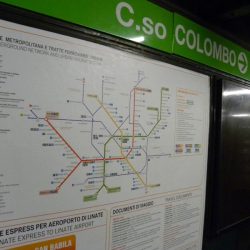
Planning your journey
There are several websites in English available that will help you planning your journey in the city of Milan. But there are actually two websites which provide the most convenient journey planners for public transportation in Milan.
At the website of ATM is not only an interactive map, but also a journey planner where you can select in the place of departure, the place where you need to arrive, the date and time. Then it will calculate which methods of public transportation and routes are best for you. Note that ATM operates the buses, trams, trolleybuses, the urban rail lines (of Trenord and the Passante Ferroviario) and metros in Milan, but not the trains.
If you want to make use of the train you can best use the website from Trenitalia as this is the main train operator in Italy. The travel planner will open after you have selected the timetable. And this website also has several country flags in the right corner where you can select your preferred language.
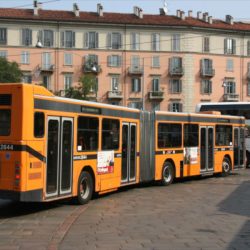
Taking the bus in and to Milan
The central bus station of Milan is located in the northwest of the city and is called Lampugnano. Here arrive many buses and coaches from other cities and from here people transfer to the metro or bus lines that drive through Milan. Another popular bus station is at Milan Central Railway Station (Milano Centrale).
In Milan there are two types of buses. These are the regular (often eco-friendly) buses and there are trolleybuses. It also has over eighty bus lines, of which there are four trolleybus lines, that connect all areas of the city. So if you need to go to an area where the metro doesn’t go to then the bus probably does. Bus line number 94 is an interesting bus line for tourists as this line circles the city center and drives past several tourist sights. At Friday night and Saturday night there are also night bus lines that start with the letter N and stops at the most popular nightlife areas. If you need a journey planner, or a bus map of Milan you can find it above in the chapter ‘Planning your journey’.
Note that the bus ticket needs to be bought in advance. And when you get on the bus you need to validate the ticket at the validating machine.
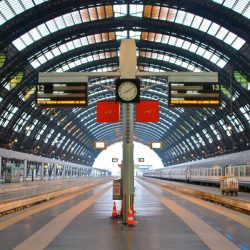
Taking the train in and from Milan
Currently has the city of Milan 22 railway stations in use and there will be some more added in the next several years.
Milano Centrale, or Milan Central Station, is the main railway station in Milan and is mainly used by the country’s primary train operator Trenitalia. From Milan Central Station you can easily travel by train to other Italian cities like Turin, Verona, Venice, Florence, Rome, Naples and abroad to cities like Barcelona, Frankfurt, Munich, Paris and Vienna. It is the largest train station in Europe by volume as 120 million passengers per year pass through the station. The station is also worth a visit because of its architecture. It is mainly a blend of liberty and art deco with many beautiful sculptures.
Other important train stations with a suburban railway service are Milano Cadorna which is located near Castello Sforzesco, Porta Garibaldi which is located near the Milanese nightlife area of Corso Como, and Rogoredo railway station next to the cheap p+r parking location in the southeast of Milan. These train stations have mainly urban rail lines that are used for commuter, suburban, regional and express trains from Trenord and the Passante Ferroviario.
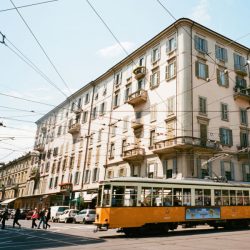
Taking the tram in Milan
The Milanese tramway network was established in 1881. Nowadays it has 17 urban routes and 1 interurban route. Taking a tram is a very efficient way of getting around in Milan as it has an extensive network throughout the city which allows you to see a lot more of the city, than if you were to take the subway.
Tram lines 2, 12, 14 and 16 are very popular with tourists because they have a stop in front of the Duomo, which is an ideal place to start your sightseeing tour. Although some prefer tram line 1 as it drives past several touristic attractions, such as the Piazza della Scala, Arco della Pace, Castello Sforzesco and the beautiful Milan Central Station.
Make sure that you have an ATM ticket before entering the tram and validate it in the tram. Most of the tram lines run until about 2:00 am, which is later than most of the bus lines do (except for the night buses). It is important to note that trams, just like buses, do not always stop at every tram stop. They only stop when a passenger pulls the cord or pushes the button in the tram or when there are people waiting outside at the tram stop. If you need a journey planner, or a tram map of Milan you can find more information above in the chapter ‘Planning your journey’.
One of the funny little things you’ll notice in Milan is that there are different kinds of new and old trams riding through the city. Some of the old Milanese trams still have the typical shiny wooden interior and folding doors which they had almost hundred years ago. If you are a fan of trams you can consider to make a guided tour with a historic tram or have dinner in a historic tram.
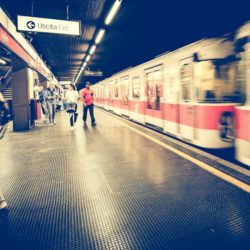
Taking the metro (subway) in Milan
Taking the metro / subway is very popular of transportation as every single day about 1.4 million people make use of the Milanese metro. It has five lines with a total length of over 100 km (62 mi) and more than hundred stations. This means that the city is well connected by subway. There five metro lines in Milan are:
Metro line 1 (the red line) goes from Sesto 1º Maggio in the north to the city center and then splits into two branches of which one goes to Rho Fiera (near the large fairground) in the north-west and the other to Bisceglie in the west of Milan.
Metro line 2 (the green line) goes from Assago Milanofiori Forum and Abbiategrasso in the south, via the city center and Milan Central Station to the north-eastern stations of Cologno Nord and Gessate. This metro line is not only running underground, but also partially overground.
Metro line 3 (the yellow line) goes from the San Donato station in the south-east via the city center and Milan Central Station to the Comasina station in the north-west.
Metro line 4 (the blue line) is currently under construction, but will connect the San Cristoforo station in the south-west via the city center to Linate airport in the east. Line 4 is expected to open in 2022 and will feature automatic driverless trains.
Metro line 5 (the purple line) runs from Bignami in the north-east to the San Siro stadium in the west. The trains at this line are already driverless.
Metro lines 1 and 3 are the most interesting ones for tourists as they have a stop near several of the Milanese landmarks including the Piazza di Duomo. To help you out we at Meet The Cities found a proper map of the Milan metro for you, so you can find all the metro routes and the stations.
When you take a good look at the metro map of Milan you will notice that, besides Duomo and San Siro, most metro stations are not named after nearby landmarks. On this website you can find the exact locations of the landmarks in Milan, so you can easily check which metro stations are nearby the landmarks that you want to visit.
As you can expect from any proper metro network you can find led-screens that provide information about which trains come next, how long you have to wait for it and its final destination, on each metro station. It’s also worthy of note that the metros run almost all day, until around 00:30 am.
